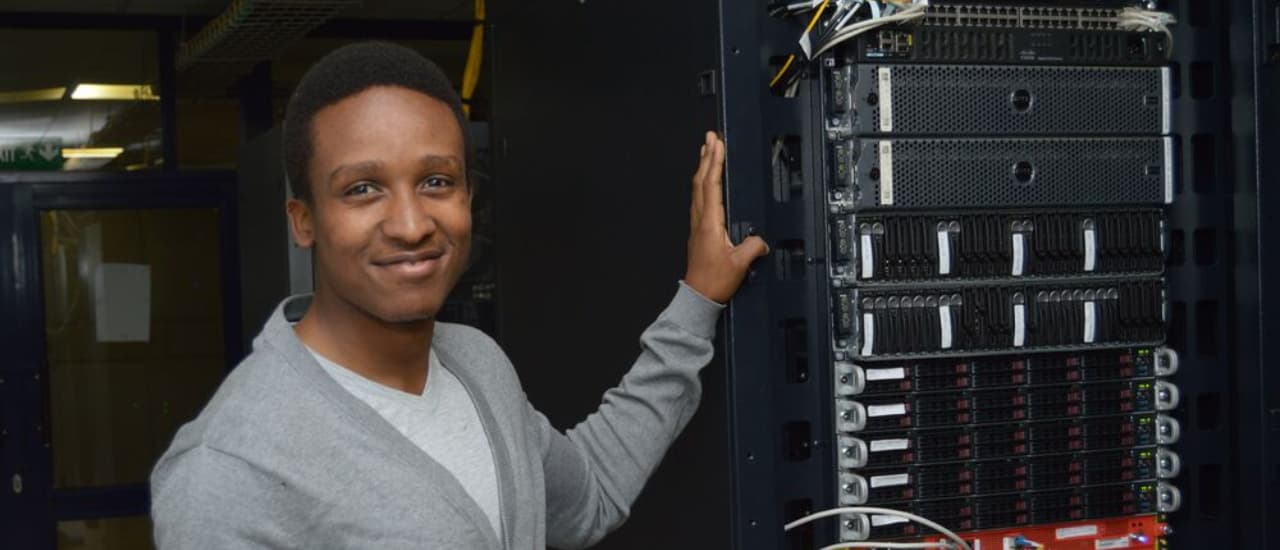When East Africa faced international subsea cable cuts last month, Internet connectivity in the two largest affected countries, Kenya and South Africa, remained relatively stable. This was thanks to their access to additional subsea cables and more robust peering ecosystems anchored by well-established Internet exchange points (IXPs).
IXPs create a more reliable, affordable, and faster Internet by allowing networks to connect directly with multiple networks at a single location to share traffic (known as ‘peering’). This means that traffic may not have to take longer routes, sometimes via international links, and instead can be exchanged locally.
According to the Pulse Country Reports, Kenya and South Africa are the top two ranked countries in Africa for the number of IXPs and networks peering at them (Figures 1 and 2).
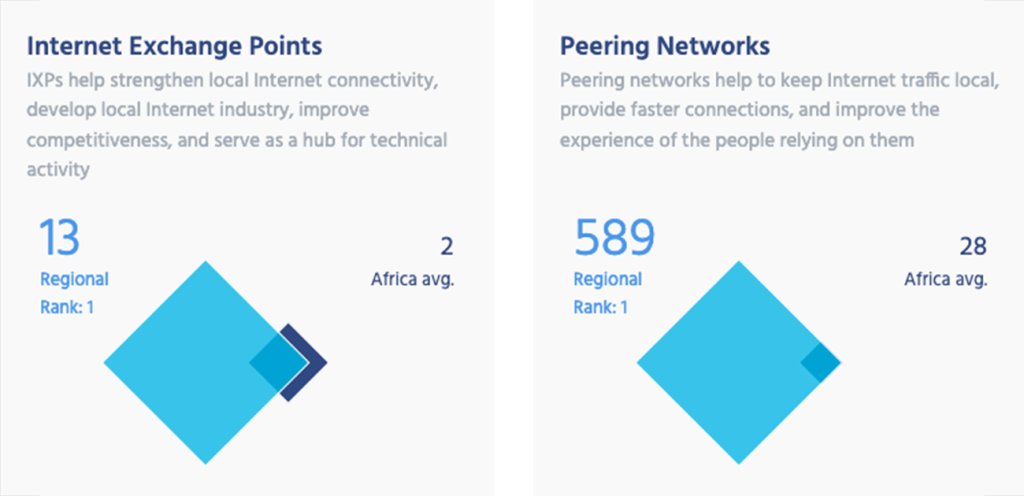
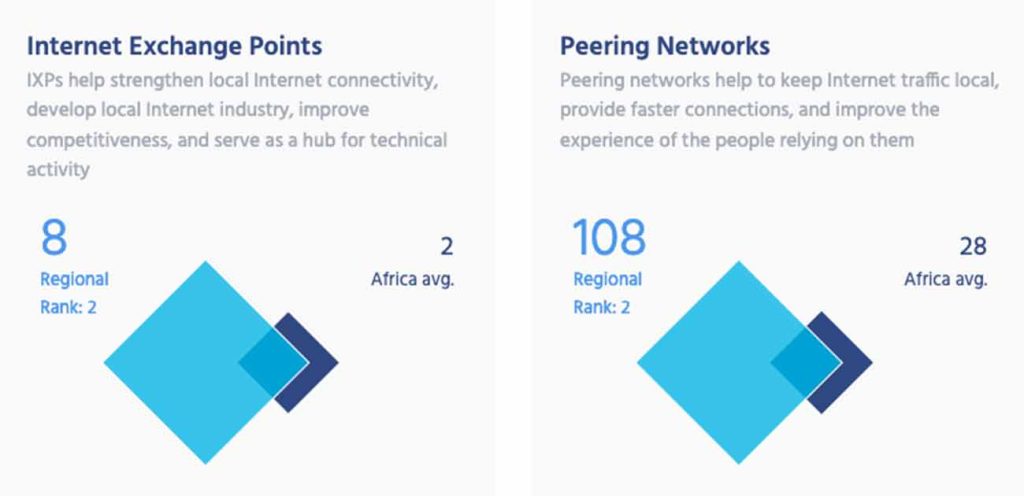
Peering at an IXP is like next-door neighbors in a small community exchanging the crops they produce in their garden instead of going to the market miles away. IXPs can also be popular places for content delivery networks (CDNs) to store caches, allowing local access to large amounts of online content. This makes IXPs critical infrastructure for developing a local resilient Internet ecosystem, particularly when critical international connectivity, like the undersea cables in East Africa last month, fails.
The Pulse IXP Tracker
Despite their importance, IXPs are not evenly distributed worldwide, nor are they all the same. IXPs can range from a piece of equipment in the closet in an office building connecting just a few local networks to some of the world’s largest IXPs located in massive data centers and connecting hundreds of global networks. Some IXPs are decades old, while many more are relatively new. Every IXP will have a different impact on the Internet infrastructure, globally, regionally, and locally, based on their capacity, number of members, and the geographic location and types of networks making up that membership.
The Internet Society has developed a new feature called the Pulse IXP Tracker to help people monitor and understand this information for the more than 1,000 individual IXPs currently operating.
Updated every month, the Pulse IXP Tracker provides several new capabilities to complement existing efforts from the measurement community, including:
Historical Data
The Pulse IXP Tracker uses data from trusted third parties to show users how IXPs have grown worldwide, whether by membership, capacity, or occurrence.
Historical data lets users map how the peering ecosystem has changed in a country, providing insight into the impacts of stakeholder actions. For example, government policies may have enabled the development or growth of IXPs, or a company’s decision to build a cache at an IXP might have led to more IXP membership or capacity.
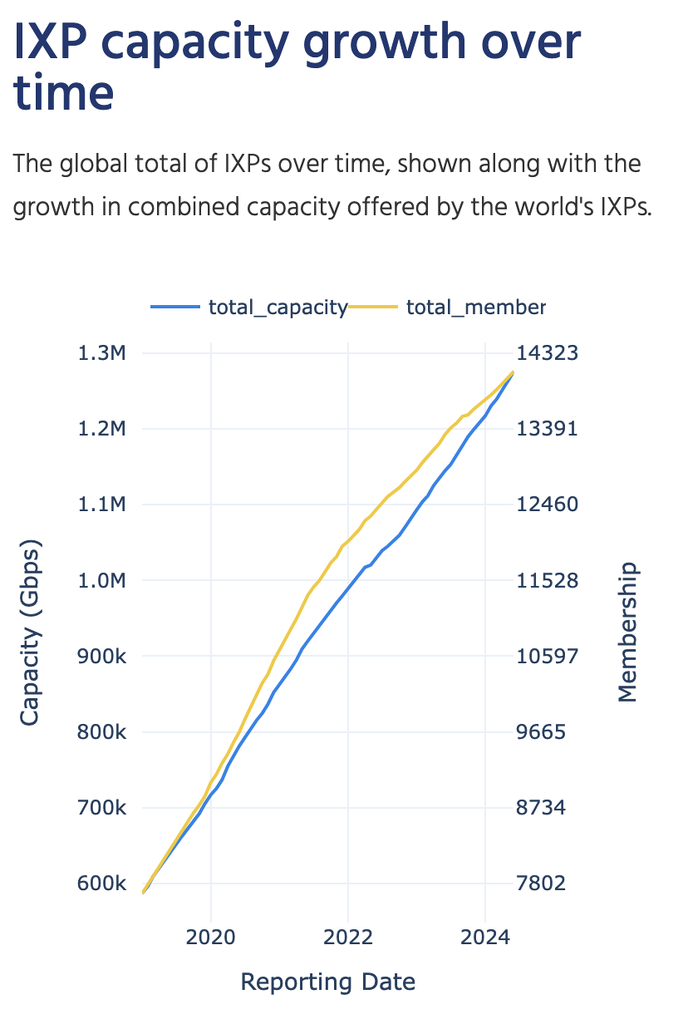
IXP Coverage Score
The Pulse IXP Tracker creates ‘a coverage score’ for each IXP. This coverage score shows the percentage of a country’s Internet networks (autonomous systems or ASes) that are members of an IXP. While the measure treats all networks in a country as equal, from the smallest enterprise network to the largest Internet service provider, the score weighs the influence of each IXP in a country.
The IXP coverage score for a local IXP can be very high in smaller, geographically isolated states. In Grenada, an island nation in the Caribbean, 70% of local networks are members of the IXP (Figure 4). As a result, traffic between these networks never has to leave the island and is much faster.
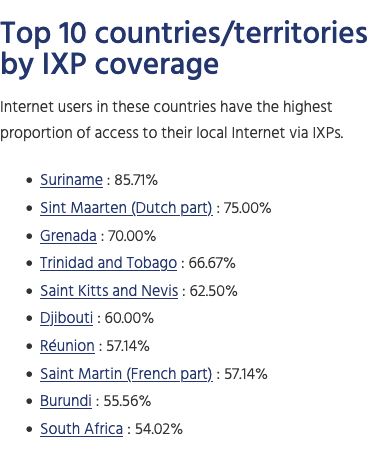
Another top-ten country, South Africa, has over 50% of its networks as members of an IXP in the country. Additionally, South Africa leads the continent in hosting content locally. More than 70% of the top 1,000 locally popular websites are hosted in South Africa (see our new popular content locality measure on our South African country report). This means that in the event of subsea cable cuts, like those last month, South Africa’s infrastructure is well suited to handle most of its Internet traffic locally.
National IXP Metrics
The Pulse IXP Tracker aggregates these measures at a national and global level. This gives users a snapshot of a country’s peering infrastructure’s health and how it has changed. It also lets users explore the key measures from the specific IXPs in their countries.
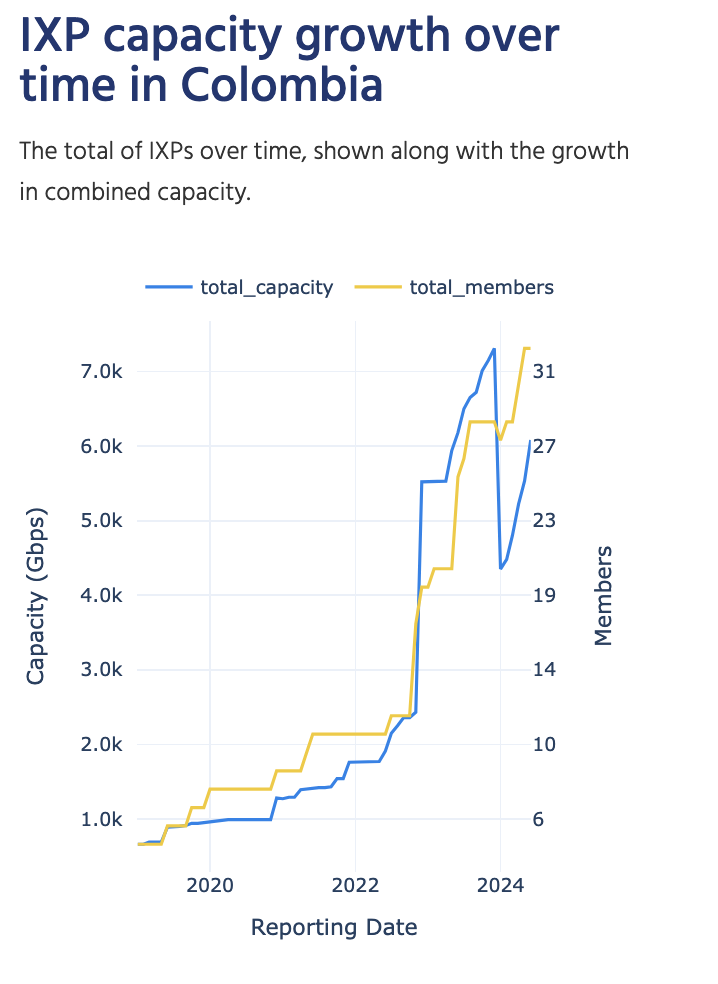
Share Your Feedback!
As we continue to improve the Pulse website, we want to hear from you. Are there specific measurements you’d like the Pulse IXP Tracker to have in the future? Are aspects of the current Pulse IXP Tracker hard to understand?
Please help us improve the Pulse IXP Tracker by sharing your feedback.

